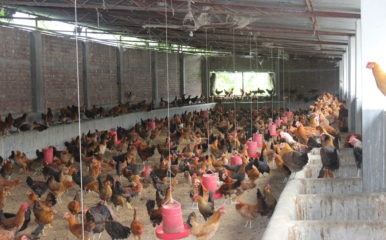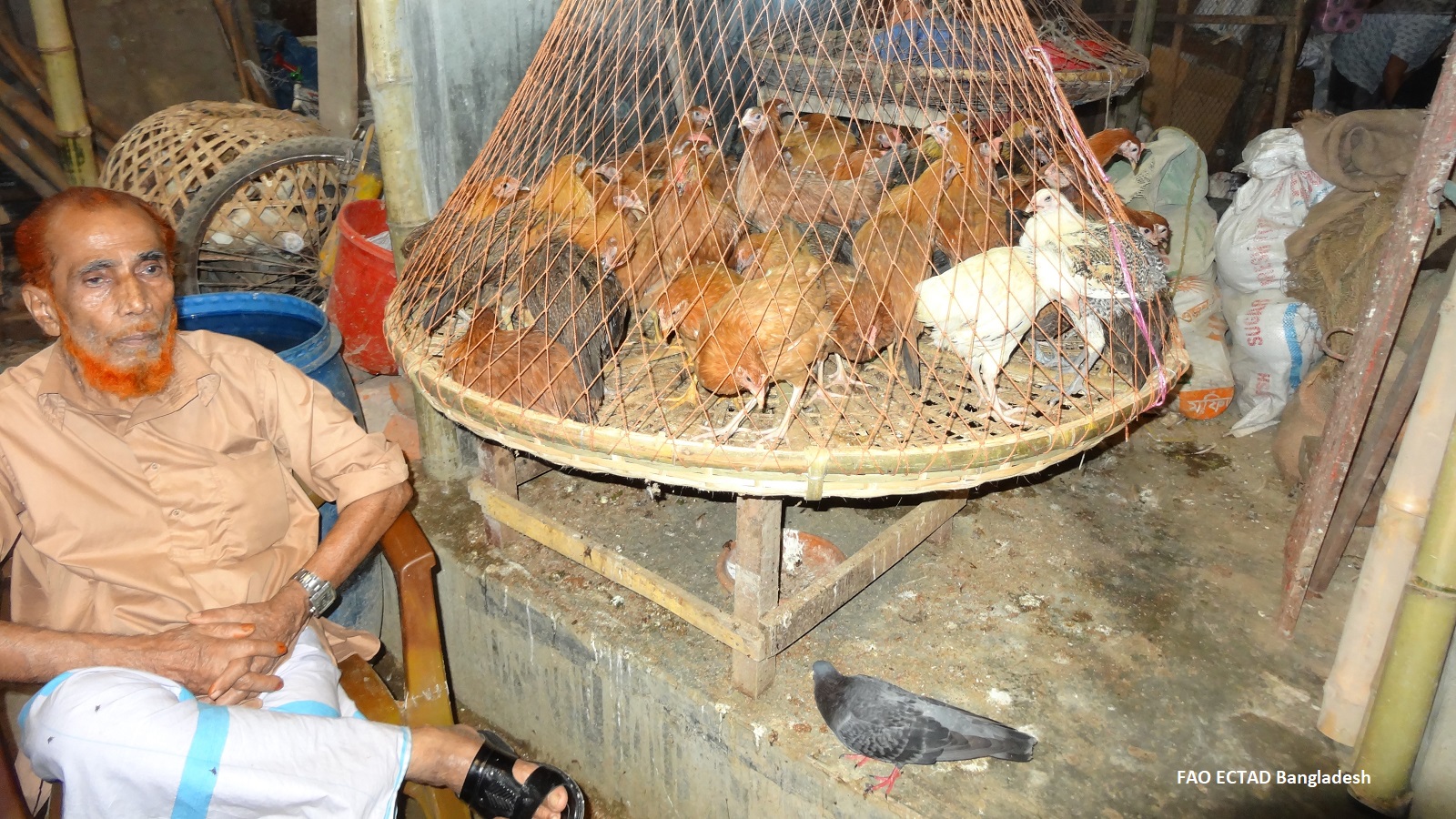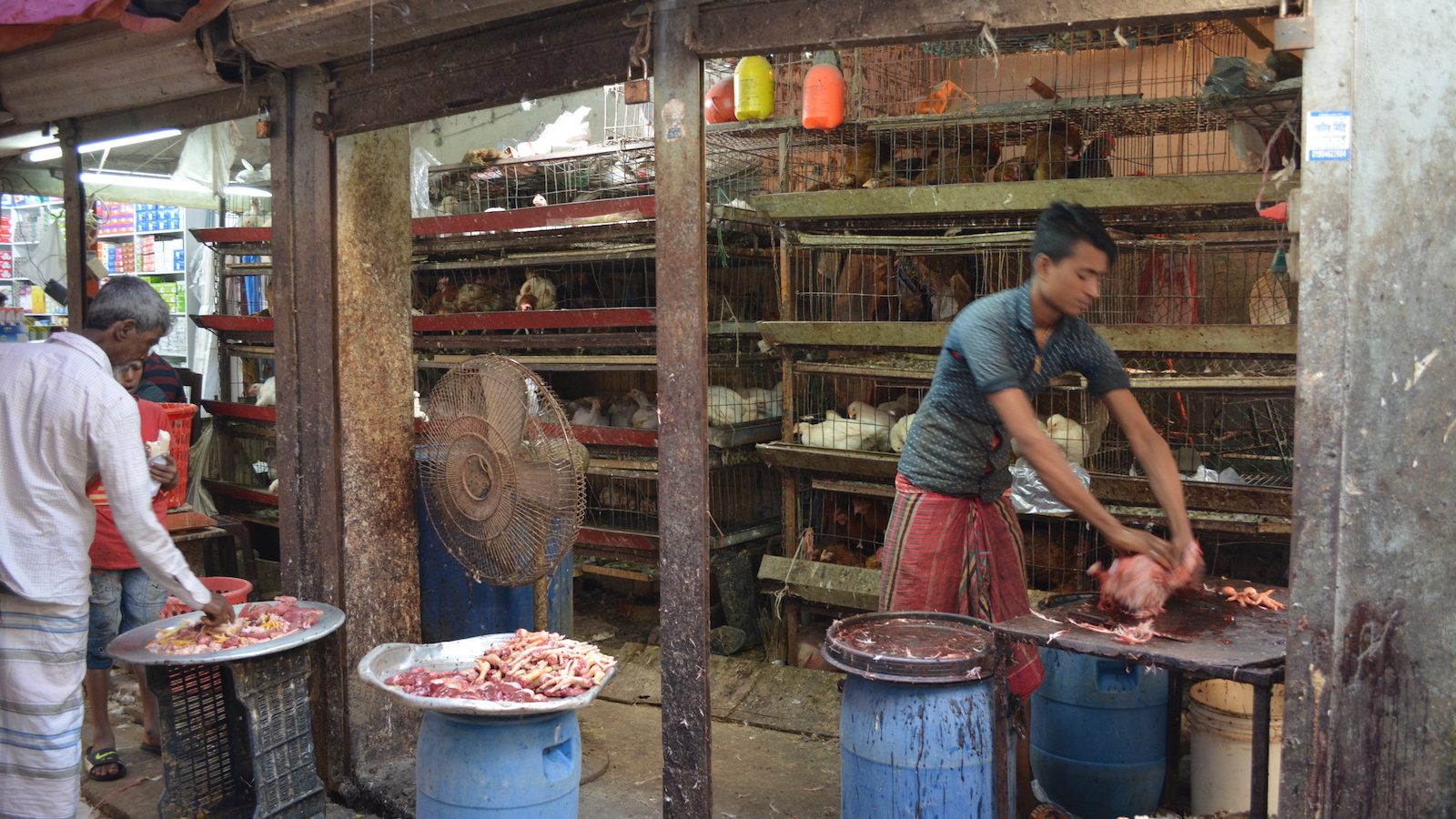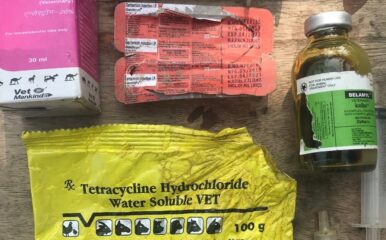
Poultry in Bangladesh
Poultry production in Bangladesh has until recently been part of subsistence farming. It now features complex systems and is set to become highly commercialised in the future.

It is estimated that today 1 million entrepreneurs and 8 million people commercially produce 10.22 billion eggs and 1.46 million tons of poultry meat annually. Latest figures show 16 grandparent farms and 206 breeder farms, with up to 70,000 commercial farms. These are mainly small-scale, typically having 500-2,500 birds.
Commercial poultry farms are growing at a rate of 15% a year, with investment in the sector expected to double in the next decade. The poultry sector is gearing up for exporting by 2024.
However, backyard poultry still accounts for 65-70%, of the country’s poultry population. These are generally raised by women and poultry keeping is recognised as a major pathway for poverty reduction, particularly for poor, landless women.
Avian influenza
Public and poultry health risks are very high in Bangladesh’s small-scale farming. There is close contact between poultry and people and few or no biosecurity measures.
Multiple serotypes of avian influenza A virus, including highly pathogenic avian influenza A virus subtype H5N1, have emerged and already become endemic. Their potential to mutate and genetically recombine with human influenza virus strains raises concern about future pandemics.
View a video made by the One Health Poultry Hub team in Bangladesh for biosecurity training with poultry farmers.
Live bird markets

Almost all poultry and poultry products transit through live bird markets. These are a feature of most food markets in Bangladesh, with bigger clusters of them in city areas. Most poultry products are sold unprocessed.
As poultry production is expected to expand, a drastic increase in the volume of live birds being traded and marketed is also expected. Poor hygienic practices at live bird markets and weak regulation add to the risk of disease for people and poultry.
To date, eight H5N1 and three H9N2 infected human cases (with one fatality) have been reported to the World Health Organisation (WHO). All the cases had a recent history of poultry exposure, with four being live bird market workers.
Porous borders between Bangladesh and neighbouring counties also present a big challenge to prevent the introduction of transboundary avian diseases by illegal trading.
Heavy and indiscriminate use of antibiotics is yet another challenge. There is almost no structurally robust monitoring for antibiotic use and antibiotic resistance, and only weak rules and regulation on antibiotic uses.
Poultry production
Bangladesh has one of the highest proportions of impoverished livestock keepers in the world. Keeping a small poultry flock (five to 10 birds) is a common practice. About 90%of rural Bangladeshi households keep poultry.
Poultry are often the only livestock raised by the poorest communities. The proportion of backyard poultry production that is traded is highest in poor, rural communities, providing households with an essential source of income as well as a protein source.
Village poultry are also commonly used as gifts to neighbours and relatives, or during social events, as well as for cock fighting.


